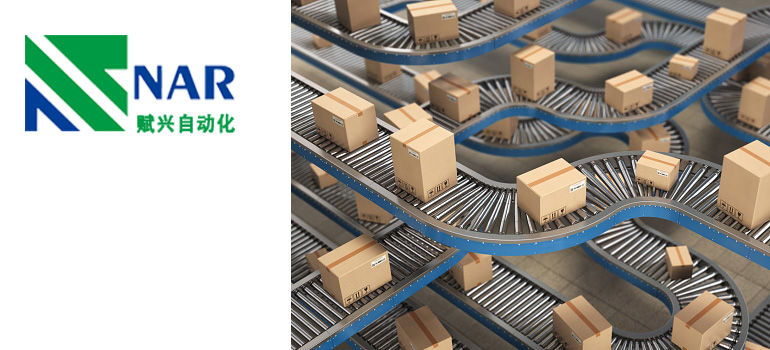Different types of belt Conveyor are used in many sectors today to convey materials and goods from one point to another. Conveyors come in a variety of styles, each tailored to a specific use. Belt conveyors are one of the most prevalent forms of conveyors, and they are widely used in manufacturing, mining, agriculture, and a variety of other sectors!
There are different types of belt conveyor ,such as belt conveyor, roller conveyor, chain conveyor ,and so on .
Belt Conveyor
Belt conveyors are extremely adaptable and are widely utilized in a variety of sectors. Depending on the use, the belt can be composed of various materials such as rubber or metal. Rubber belts, for example, are great for handling materials that require high friction, whereas metal belts are ideal for high-temperature situations. Belt conveyors can also be arranged in a variety of ways, such as flat, troughed, or inclined. Troughed belts are beneficial for moving loose materials such as sand, gravel, or grains because they prevent things from dropping down the edges. Inclined belts are used to transport items up and down a slope.
Roller Conveyor
Roller conveyors are used to transport large loads like pallets, barrels, and containers. Because the rollers are supported by a frame and use less energy to move the load, they are a cost-effective method for conveying large products. Gravity roller conveyors are propelled by the weight of the cargo, whereas powered roller conveyors are propelled by a motor. Accumulating roller conveyors can be used to temporarily gather loads while pallets or containers are sorted, inspected, or labelled.
Chain Conveyor
Chain conveyors are ideal for high-volume, harsh-environment applications. They move the cargo along the conveyor track with a chain. Depending on the use, the chain can be composed of various materials such as stainless steel, carbon steel, or plastic. Chain conveyors are available in single-strand, double-strand, and triple-strand configurations. Single-strand conveyors are employed for basic applications, but double-strand and triple-strand conveyors are used for big loads.
Telescopic Conveyor
Telescopic conveyors are used for loading and unloading trucks and containers. They consist of a conveyor belt mounted on a telescopic boom that can extend and retract to reach different positions. Telescopic conveyors are available in various configurations, including gravity, powered, and accumulation. Powered telescopic conveyors use a motor to move the conveyor belt, while gravity telescopic conveyors rely on the weight of the load to move it.
Flat Belt Conveyor
Flat belt conveyors move lightweight goods like packages, bags, and cartons. As Belt Conveyor, Flat’s one come in a variety of configurations, including horizontal, inclined, and declining. Flat belt conveyors that are inclined and declined are used to move items up and down an incline. They can be used to convey items to different levels on a packing line or to move things between floors in a building.
Slat Conveyor
Slat conveyors are used to transport heavy-duty loads such as engine blocks and large castings. They consist of slats or plates that are linked together and move along a track. Slat conveyors are available in various configurations, including straight, curved, and inclined. Inclined slat conveyors are used for moving materials up an incline. They can be used for applications such as transporting products to different levels on a production line.
Wire Mesh Conveyor
Wire mesh conveyors are utilised in high-temperature and corrosive conditions, such as ovens and chemical processing facilities, to transfer products. They are made from a wire mesh belt that is continually moved across two or more pulleys. Wire mesh conveyors come in a variety of forms, including as horizontal, inclined, and declining. They may be utilised in a variety of applications such as baking, drying, and chilling.
Bucket Conveyor
Bucket conveyors are built particularly for transporting bulk materials such as grains, sand, and cement. The buckets are moved along a track by a belt or chain. They come in a variety of forms, including centrifugal, continuous, and positive discharge. The centrifugal bucket conveyor runs at a high speed, using centrifugal force to move items out of the bucket, whereas continuous bucket conveyors function at a slower pace, with the buckets remaining upright to prevent spillage.
Applications of Conveyor
Wire mesh conveyors are used to transport products in corrosive and high-temperature conditions.
Conveyor belts and various forms of conveyors have widespread applications in a variety of industries, including manufacturing, mining, agriculture, and logistics.
Belt conveyors are used in manufacturing to carry raw materials and completed products between stages of the manufacturing process. Belt conveyors are used in the mining industry to move coal, ore, and other products from the mine to the processing facility. Belt conveyors are used in agriculture to carry grains, vegetables, and fruits from the fields to storage buildings. Belt conveyors are used in logistics to carry parcels and packages between different regions of a warehouse or distribution center.
More information about different types of belt conveyor, please contact PT.Nar.
Maybe you are interested in the following: 8 Conveyor System Design Mistake

